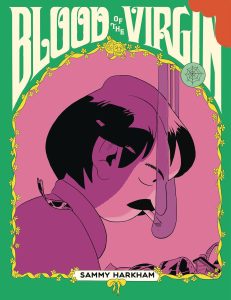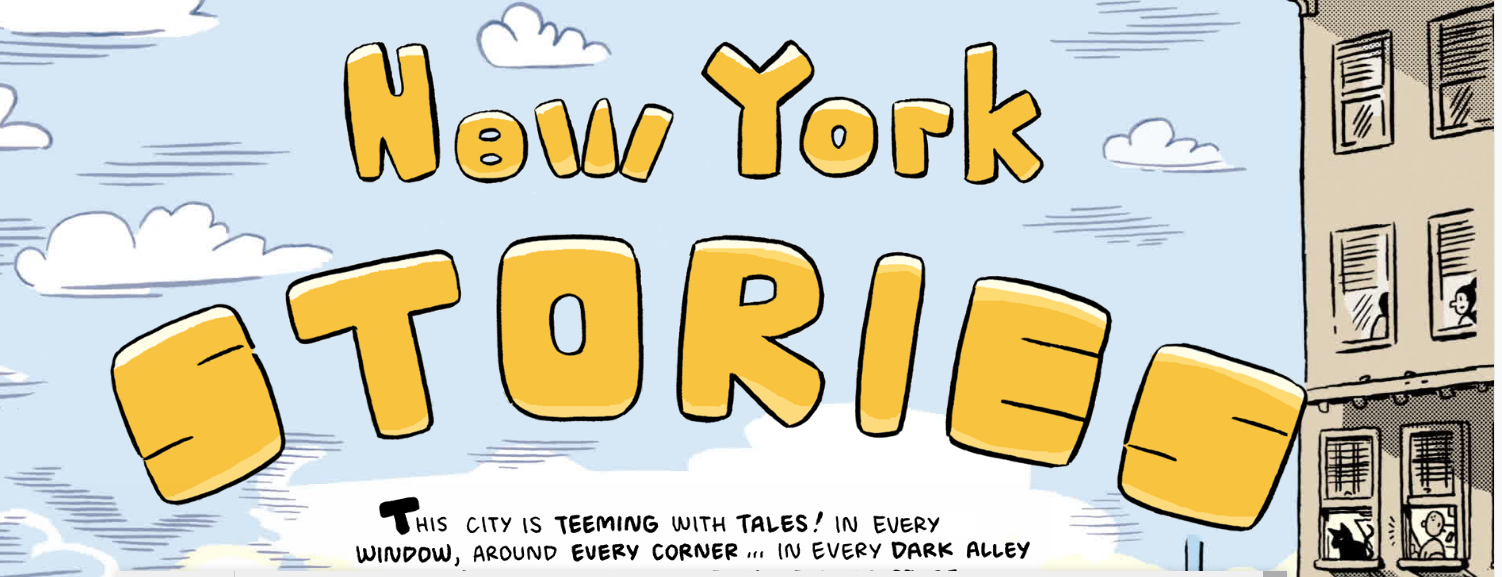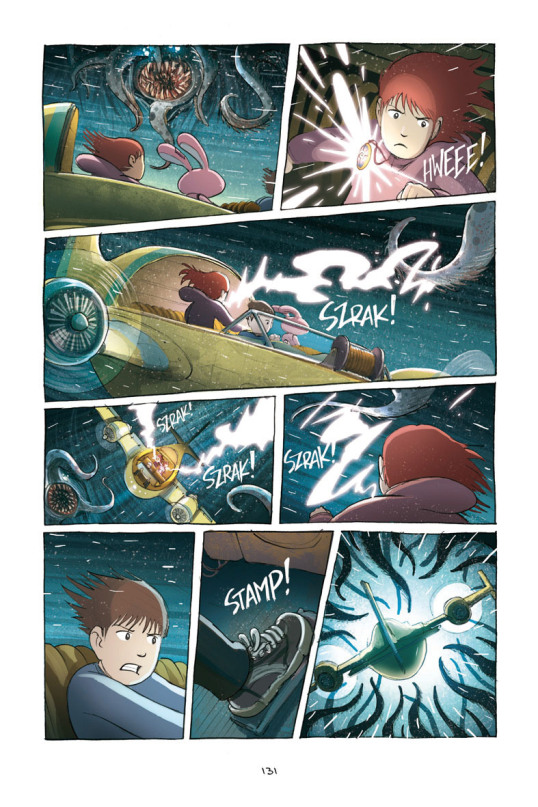 Blood of the Virgin
Blood of the Virgin
Creator: Sammy Harkham
Color assistance: Juki Chan, Kevin Huizenga
Publisher: Pantheon Books
Sacrifice is the key to success in Hollywood, life, and love for 70s film editor, Seymour, and his wife, Ida– the melancholic film industry family at the center of Sammy Harkham’s long-running serial. Over the last 14 years, Harkham has told their coming of parenthood story in 50 page installations between the pages of Crickets and one excerpt chapter in Kramers Ergot — all of which has been collected in Blood of the Virgin.
In 1971, Seymour reluctantly sells his eponymous horror drama script to the B-movie studio he edits for, and what follows is the all too consistent rise and fall of his fledgling director career. Back home, Seymour and Ida constantly squabble over punctuality, flakey babysitters, and who is currently on baby patrol. The compaction of inexperience and expectation [in Hollywood and in parenthood] frustrates both leads along their slowly self-destructive spirals away from responsibility and each other. The title is a perfect encapsulation of this dynamic: in order to succeed in their particular endeavors, Seymour and Ida must sacrifice their inexperience and pride to survive. Hell, Ida’s mom, SPOILERS, endures the Holocaust as an Ashkenazi Jew to lead a quaint New Zealand housewife life; a heavy-handed parable employed late to mirror Ida’s motherhood delusions and escape from perceived persecution in passive aggressive Los Angeles.
Blood of the Virgin never shies away from the inherent misogyny and racism of ’70s Hollywood with all the objectification and quiet violence that entails. In Harkham’s Los Angeles, roles are quickly replaceable; this goes for acting and production as it does Seymour and Ida’s faithfulness towards one another. This is a graphic novel that wants to solely dabble in the rocky moments of a relationship and never the meet-cute or explosive ending, which makes for a remarkably compelling and ugly romance that lives argument to argument and unsaid remark to nuanced body language response.
A strength, and rather, a testament to Harkham’s skillset is the consistency to this ugly, full body acting that powers Blood of the Virgin’s ligne claire style for 14 years. You can definitely see the linework evolve, but only in where it uses black — later, Harkham uses black to render more than fill, but mostly Seymour and Ida live in a style reminiscent of Rich Tommaso’s Dark Corridor or Hergé’s Tintin books. I say this to bring up the consistency in streamlined page layouts as well. At 8.5″ x 11″, Harkham keeps thick margins on the inside seam and outer edge with thin panel borders to maximize panel space, and additionally cause less programming errors in collected form as ambidextrously-facing works rather than solely left or right-facing. Really, the biggest change over Blood of the Virgin’s runtime is panel count. After the first chapter, Harkham lowers the panel count to allow for more space in-panel for body language and facial expressions to dictate scenes rather than dialogue.
Set in warm grey to ape sepia tone, but more so to get away with B/W printing, Blood of the Virgin keeps stylistically consistent to the point of only experiment-flirting for short periods. Sometimes Harkham employs a match cut instead of a seamless transition, or vice versa. There’s an inconsistent rather than reoccurring use of dream imagery and metaphor, but this too works in its favor to double down on how creative the many ways Hollywood, love, and parenting come at you. Sure, that’s me giving more credit, but a story gestating over 14 years is bound to have some differing storytelling visuals over its production schedule [just like a movie!].
What does stay consistent, as well, is the sfx. Often literal, light, and not intended to impact the panel, but rather to communicate, Harkham’s sfx bring a brightness to an otherwise darkened LA of comic strip shaped folk! Balloons are oriented horizontally, so the word stacks replicate prose more than superhero talk, which rings in the “real” graphic novelist air it lives on. Early on, balloons can dominate wordier panels, but for Harkham, there is a clear and present priority for dialogue and dialogue beats over pristine structure. One of my fav techniques Harkham hits the well on is obscuring necessary but altogether diegetic dialogue and remarks with another balloon or visual to keep the scene rolling or to show how folks talk over one another on set.
While I don’t necessarily agree with the character development arcs [Ida’s arc is to ultimately become a housewife?? Blegh], creative choices [three N-words; two with the hard R!], or the morals that Harkham has characters raked over, Blood of the Virgin is a far more deeply constructed story than its namesake and premise might advertise. If you can stomach the bittersweet malaise of a rocky road-only romance, then give this one a spin.
Blood of the Virgin is available to order now.
Check The Beat’s review section for a new graphic novel review every Friday in 2023!








